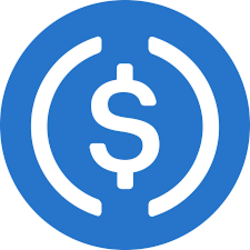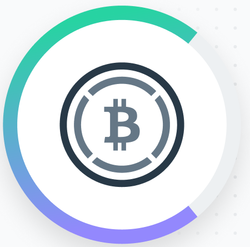

Key takeaways:
-
Bitcoin tends to rally significantly when low leverage meets stronger-than-expected retail sales and hawkish Federal Reserve signals.
-
In three separate 7-week periods, Bitcoin rose 50% to 84%.
-
Upcoming speeches from Fed Chair Jerome Powell could benefit Bitcoin price.
Bitcoin (BTC) price rallies are frequently linked to investors’ inflation concerns or data that surpasses expectations for economic growth, yet clear signals of an impending rally are rare. However, a combination of three independent events has historically coincided with BTC price surges of 50% or more.
Significant Bitcoin rallies occur when US Federal Reserve policy expectations ease, crypto market leverage is low, and strong retail data supports bullish momentum. The last occurrence of these three events saw Bitcoin’s price climb from $40,000 to $73,500 in seven weeks in early 2024.
Comparable gains were recorded in early 2023, when the same three drivers aligned, propelling Bitcoin from $16,700 to $25,100 over seven weeks. A third example dates back to July 2021, culminating in a 76% price increase.
Bitcoin gained 84% from Jan. 25, 2024, to March 13, 2024
After stagnating near $43,000 in December 2023, Bitcoin’s price tested the $48,000 level in early January 2024. The failed breakout was followed by a sharp drop to $37,800 by late January, just as a seven-week bullish trend began. A crucial factor at this stage was the exceptionally low perpetual futures funding rate, sitting at 4% per year.
Other factors impacting the price reversal was US retail sales data for December 2023, released on Jan. 17, 2024, exceeded expectations, rising 0.6% month-over-month compared to the 0.4% forecast and US Federal Reserve Chair Jerome Powell’s Jan. 31, 2024 press conference that, signaled a tighter monetary stance, with no immediate interest rate cuts in sight.
Bitcoin gained 50% from Jan. 3, 2023, to Feb. 20, 2023
Prior to this rally, Bitcoin had consolidated below $18,000 for two months, resulting in minimal demand for leveraged long positions, as reflected by a near-zero perpetual futures funding rate.
The landscape shifted on Jan. 3, 2023, when the funding rate on Binance surged to 50% within four days. This coincided with stronger-than-expected retail sales data for January 2023, which rose 3% month-over-month, outpacing the 1.9% consensus. Notably, Fed Chair Powell also suggested a tighter monetary policy to combat inflation during his speech at Sveriges Riksbank on Jan. 10, 2023.
Bitcoin 76% rally: July 20, 2021 – Sept. 7, 2021
From July 20, 2021, to Sept. 7, 2021, Bitcoin gained 76%. Bitcoin’s price had dropped from $40,000 to below $30,000 over the preceding month, dampening market sentiment. Suddenly, the annualized Bitcoin funding rate jumped from 0% to 37% in two weeks, while US retail sales data for June 2021 surprised economists by increasing 0.6%, even though consensus had predicted a 0.4% decline.
During this period, Powell’s remarks at the Jackson Hole Economic Symposium on Aug. 27, 2021, indicated a potential reduction in central bank asset purchases, which was a move aimed at curbing inflation.
Related: Ray Dalio says global monetary order ‘on the brink’ of breakdown
Bitcoin’s next potential upswing
The common thread linking these significant rallies is a reduction in expectations for expansionary Federal Reserve policy and initially low leverage demand from Bitcoin bulls. When these factors coincide with robust retail data, they create ideal conditions for a Bitcoin bull run, as traders tend to remain cautious ahead of possible economic downturns.
Looking ahead, Fed Chair Powell is set to speak on June 18 following the central bank’s interest rate decision. Additional key dates include the Beige Book release on July 16 and the Jackson Hole Economic Symposium starting Aug. 21. Monitoring US retail sales data for May, due June 17, and for June, due July 15, will also be important.
This article is for general information purposes and is not intended to be and should not be taken as legal or investment advice. The views, thoughts, and opinions expressed here are the author’s alone and do not necessarily reflect or represent the views and opinions of Cointelegraph.
Key takeaways:Bitcoin tends to rally significantly when low leverage meets stronger-than-expected retail sales and hawkish Federal Reserve signals.In three separate 7-week periods, Bitcoin rose 50% to 84%.Upcoming speeches from Fed Chair Jerome Powell could benefit Bitcoin price.Bitcoin (BTC) price rallies are frequently linked to investors’ inflation concerns or data that surpasses expectations for economic growth, yet clear signals of an impending rally are rare. However, a combination of three independent events has historically coincided with BTC price surges of 50% or more.Bitcoin/USD, log scale. Source: TradingView / CointelegraphSignificant Bitcoin rallies occur when US Federal Reserve policy expectations ease, crypto market leverage is low, and strong retail data supports bullish momentum. The last occurrence of these three events saw Bitcoin’s price climb from $40,000 to $73,500 in seven weeks in early 2024.Comparable gains were recorded in early 2023, when the same three drivers aligned, propelling Bitcoin from $16,700 to $25,100 over seven weeks. A third example dates back to July 2021, culminating in a 76% price increase.Bitcoin gained 84% from Jan. 25, 2024, to March 13, 2024After stagnating near $43,000 in December 2023, Bitcoin’s price tested the $48,000 level in early January 2024. The failed breakout was followed by a sharp drop to $37,800 by late January, just as a seven-week bullish trend began. A crucial factor at this stage was the exceptionally low perpetual futures funding rate, sitting at 4% per year.Binance BTC perpetual futures funding rate, annualized. Source: TradingView / CointelegraphOther factors impacting the price reversal was US retail sales data for December 2023, released on Jan. 17, 2024, exceeded expectations, rising 0.6% month-over-month compared to the 0.4% forecast and US Federal Reserve Chair Jerome Powell’s Jan. 31, 2024 press conference that, signaled a tighter monetary stance, with no immediate interest rate cuts in sight.Bitcoin gained 50% from Jan. 3, 2023, to Feb. 20, 2023Prior to this rally, Bitcoin had consolidated below $18,000 for two months, resulting in minimal demand for leveraged long positions, as reflected by a near-zero perpetual futures funding rate.Binance BTC perpetual futures funding rate, annualized. Source: TradingView / CointelegraphThe landscape shifted on Jan. 3, 2023, when the funding rate on Binance surged to 50% within four days. This coincided with stronger-than-expected retail sales data for January 2023, which rose 3% month-over-month, outpacing the 1.9% consensus. Notably, Fed Chair Powell also suggested a tighter monetary policy to combat inflation during his speech at Sveriges Riksbank on Jan. 10, 2023.Bitcoin 76% rally: July 20, 2021 – Sept. 7, 2021From July 20, 2021, to Sept. 7, 2021, Bitcoin gained 76%. Bitcoin’s price had dropped from $40,000 to below $30,000 over the preceding month, dampening market sentiment. Suddenly, the annualized Bitcoin funding rate jumped from 0% to 37% in two weeks, while US retail sales data for June 2021 surprised economists by increasing 0.6%, even though consensus had predicted a 0.4% decline.During this period, Powell’s remarks at the Jackson Hole Economic Symposium on Aug. 27, 2021, indicated a potential reduction in central bank asset purchases, which was a move aimed at curbing inflation.Related: Ray Dalio says global monetary order ‘on the brink’ of breakdownBitcoin’s next potential upswingThe common thread linking these significant rallies is a reduction in expectations for expansionary Federal Reserve policy and initially low leverage demand from Bitcoin bulls. When these factors coincide with robust retail data, they create ideal conditions for a Bitcoin bull run, as traders tend to remain cautious ahead of possible economic downturns.Looking ahead, Fed Chair Powell is set to speak on June 18 following the central bank’s interest rate decision. Additional key dates include the Beige Book release on July 16 and the Jackson Hole Economic Symposium starting Aug. 21. Monitoring US retail sales data for May, due June 17, and for June, due July 15, will also be important.This article is for general information purposes and is not intended to be and should not be taken as legal or investment advice. The views, thoughts, and opinions expressed here are the author’s alone and do not necessarily reflect or represent the views and opinions of Cointelegraph. Cointelegraph.com News


















































































































